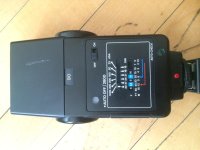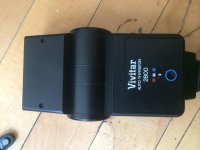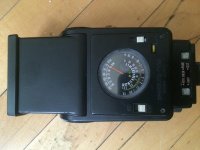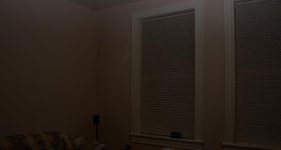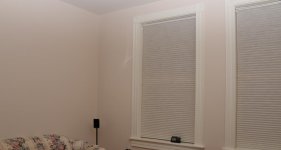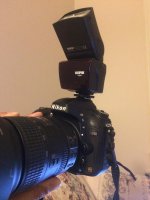i know i ask many questions, but if u can help me figure this out.
in manual mode, using the built in camera flash, the optical slaved flash fires OK.
when i use Sunpak PF30X on camera's hot shoe as a fill flash it works well with both TTL and manual modes (changed in the camera).
I am unsure what you mean. I think (not certain) the Sunpak PF30X is iTTL only, and has no menu to select Manual flash. I think it cannot possibly do manual mode. Feel very free to tell me where I go wrong.
The menu in the camera only affects the camera internal flash, which is out of play if its door is shut. The camera menu does not affect a hot shoe flash. Normally the hot shoe flash has its own menu and control. The Sunpak is probably an exception in that it only does one thing (TTL), and needs nothing but an on/of switch.
(there is an exception, the Nikon SB-300 and SB-400 also use that internal menu to select Manual or TTL, but I suspect that is strictly a Nikon thing. They would not support a competing flash model that way).
but when i add an an off camera (old) flash with optical slave (to the same scenario, camera in manual flash mode, sunpak flash connected on camera) something happens and the fill light becomes less than when the slave is turned off.
it seems like adding a slave changes the on camera external flash's setting even if the camera is in manual flash mode.
View attachment 74736View attachment 74737
I don't know. My suspicion is the Sunpak is necessarily always TTL mode, and will always preflash, which should always trigger the slave too early to contribute anything.
I think that if the light is greater when the slave is turned on, it could only be because the slave is able to contribute somehow. Which seems unlikely from a TTL trigger, but for example, the SB-800 responds very fast, and can flash at the preflash, and can flash again at the final flash (if at less than full power level). But most flashes can only flash once, at the preflash, and then they are spent. I really do not expect the Vivitar can flash twice that fast - so I am very puzzled about what could be happening.
So... I really have no idea. However, the picture I would like to see is this:
I would suggest repeating it, but in this way. Photo is like a tabletop shot, of an object on a table top or some surface we can see, to make a shadow we can see on that surface. This object should make a dark shadow behind it. Something opaque standing up would be ideal. Large or small object probably does not matter. The presence of shadows is the goal. Maybe the object standing on white paper, to emphasize the shadow.
Specifically rotate the camera up on its end (vertical orientation), specifically so the hotshoe flash is at one side of lens instead of directly above the lens. Then the hot shoe flash shadow is at the other side of the object, so it can be seen (otherwise if above the lens, shadow may be directly behind, and be very hard to see).
The remote slave makes another second shadow, much more to the side, maybe the other side (opposite the side to which the hot shoe flash is rotated). Then you can recognize the two shadows in the picture, and better identify the intensity of the two flashes by the darkness of the shadow (one flash tries to fill and lighten the shadow made by the other flash). If the flashes are about equal intensity, both shadows will be present, about equal, but not fully dark. If one flash is stronger, it weakens the other shadow more, and its own shadow is darker.
The point is, then we can see which flash is doing what, and better sense what is actually happening... I hope that is a good idea.


